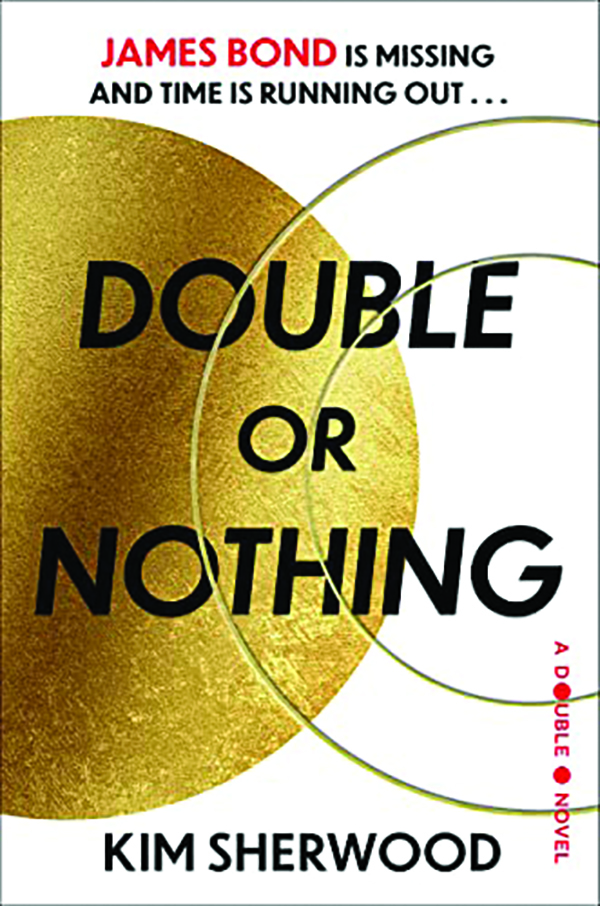
007 after Fleming
Malcolm Forbes
This year marks the 70th anniversary of Casino Royale, the first literary adventure for James Bond, 007. Ian Fleming’s debut novel, initially dismissed by its creator as “adolescent tripe,” introduced a suave yet ruthless hero who was sent on Her Majesty’s secret service to bankrupt a Soviet operative at the gambling tables of a French resort. Thrilling, stylish, original and filled with cars, cocktails, high-stakes drama, a beautiful girl, and, for Raymond Chandler, “a torture scene which still haunts me,” the book laid down the template for the 13 Bond titles that followed. Those titles then spawned the phenomenally successful film franchise.

Bond endures on the big screen, but he also lives on in print, thanks to new work by select authors commissioned by the Ian Fleming Estate. Despite these writers’ good intentions, Bond continuation novels have been a mixed bag. Shortly after Fleming’s death, Kingsley Amis, a devout Bondophile, adopted a nom de plume and delivered the goods with Colonel Sun. However, this century has seen a lackluster, Bond-by-numbers effort in Sebastian Faulks’s Devil May Care, along with Jeffery Deaver’s Carte Blanche, which strayed too far from the tried-and-tested Bond formula. Only in recent years has Anthony Horowitz restored Bond’s fortunes with a trio of novels. What could have been crude pastiches and pale imitations were instead loving homages and convincing reproductions that impressed general readers and die-hard aficionados alike.
The latest writer, and the first woman, to pen an authorized Bond sequel is Kim Sherwood. Born in England, Sherwood made her mark in 2018 with Testament, a powerful debut novel about the Holocaust. Her latest move and choice of direction is interesting. Her Bond continuation novel is Bond-free: He is missing in action, presumed captured or dead. Instead, her protagonists are three young MI6 agents, each endowed with pluck, ambition, and a license to kill. Double or Nothing is, we are told, “the first in a trilogy of Double O novels expanding the James Bond universe.” But what is that universe like without James Bond in it?
Sherwood gets things underway at a pace. Posing as a photojournalist, Sid Bashir, 009, ventures off the beaten track in Syria and launches a daring raid on a compound to free a high-value hostage. His chance of mission success is less than zero, but he manages to defy the odds, save the day, and rescue a woman called Johanna Harwood.
Not only is Harwood 003, but she is also Bashir’s ex-fiancee. She was kidnapped while following a lead in the search for Bond, Bashir’s mentor and another of Harwood’s old flames. But now, the trail for 007 has gone cold.
Unfortunately, for MI6, there are more pressing concerns. There has been a spate of Double O casualties. “We have a leak, and we’re bleeding,” spymaster M tells Bashir. In addition to this, all eyes are on tech billionaire Sir Bertram Paradise, who claims that his geoengineering project, Cloud Nine, can save the planet. But his head of security has disappeared. More alarmingly, so too has his science officer, Dr. Zofia Nowak. Bashir and Harwood are tasked with locating Nowak before her knowledge falls into the wrong hands. But Bashir’s mission is twofold: Along with finding Nowak, he must keep tabs on Harwood and ascertain whether she is still a loyal British agent or was turned in captivity.
Meanwhile, Joseph Dryden, 004, is assigned the job of infiltrating Sir Bertram’s circle to discover if there is trouble in paradise. With help from his old friend and former lover, Dryden joins Paradise’s security team and accompanies his new boss on an international press tour. Dryden learns that Paradise plans to release cloud-seeding particles from his superyacht to undo the damage caused by climate change. But is this really what he is up to? And what is his connection with the shadowy Rattenfanger organization?
There is a moment in the book when a character tells Harwood to stop pining for Bond. “This man, he is a fantasy. The cars, the women, the gadgets, the endurance, the courage, the one man to hold the line and never waver.” And then, as a parting shot: “Time to move on. You are the new hero of the Secret Service.”
Sherwood has moved on with her three new heroes of the Secret Service. That old hero, Bond, features only fleetingly in a few brief scenes of backstory about a botched attempt to bring in a Russian defector in Barcelona. Sherwood then makes it clear he is both a relic of the past (“the poster boy for a waned empire”) and an endangered species: “James Bond, CMG, conqueror of SMERSH, and defender of the realm, was running out of reasons to live.”
To compensate for Bond’s absence, Sherwood goes all out to ensure her creations make an impact on the page. Bashir, the service’s top strategist, is as skilled at defeating an opponent at chess as he is at eliminating a target with a knife. Part Northern Irish, part Algerian-French, Harwood has gone undercover as many different nationalities, is “adaptable to the point of camouflage,” and has eyes that could “wither a man at forty paces.” And Dryden, a hypervigilant, ex-Special Forces slab of muscle, is “a soldier who knew he could command any situation and didn’t need to prove it.”
Sherwood’s trio brings variety to the proceedings, but also diversity (Dryden, for example, is black and gay). Sherwood freshens things up further with some other neat touches. M is still head of the Secret Service, but he has appointed Moneypenny (no longer Miss but Ms.) as section chief in charge of the Double O’s. Q, once a gadget master on two legs, is now a quantum computer.
In places, we see Sherwood clinging closely to Fleming’s formula. There is sex and violence, glamour and cruelty, action and intrigue. We get slick rejoinders and name-dropped luxury brands. Besides Syria, the exotic locations include Berlin, Istanbul, a lake in Slovenia, and a spaceport in Kazakhstan. In one standout section involving an illegal fighting tournament in Macao, Dryden is forced to enter the ring and take on an adversary wearing chloroform-coated gloves while under the baleful gaze of gun-toting, trigger-happy triads “in sharp suits and mean moods.”
Bond books, and indeed Bond films, stand or fall on the strength of their villains. Double or Nothing is all the better for its deliciously fiendish bad guy, an unhinged megalomaniac who keeps a Siberian tiger in a golden cage and is prone to lofty pronouncements such as “I’ve hijacked the heavens.” Rattenfanger, ostensibly a private military company but in reality a terrorist group for profit, is a SPECTRE for these times.
Sherwood is less successful in other areas. Dryden, who is deaf in one ear, conveys intelligence and receives instructions via a hearing implant. As a result, he can feel like a remote-controlled robo-spy. The narrative is occasionally clogged with exposition or studded with clunky lines that purport to be hard-won wisdom: “We do not traffic in death, Joe. It traffics in us”; “A man makes his own luck. A woman makes her own choices.”
The novel is too busy, too multistranded. It is certainly overstuffed with either cameos from or references to previous Bond novels: Shrublands, the health farm from Thunderball; Tiger Tanaka, the head of Japan’s SIS from You Only Live Twice; the sniper-cellist from The Living Daylights. (For the real fans out there, Sherwood gives us a security officer called Bob Simmons.) Purists will be shaken and stirred by the detonations of F-bombs and confused by the somewhat arbitrary timelines (by rights, Bond should have hung up his holster and cashed in his chips decades ago). Those who prefer their spy thrillers to have one lead character instead of three may be frustrated by the rotating perspectives, which results in at least one character being left in limbo and out of action for pages on end.
Still, Sherwood deserves praise for updating Fleming and for writing what is a propulsive and immersive novel, one that grips the reader from its dynamic opener to its blistering finale. Let’s hope her next two installments pack a more perfect punch.
Malcolm Forbes has written for the Economist, the Wall Street Journal, and the Washington Post. He lives in Edinburgh.
